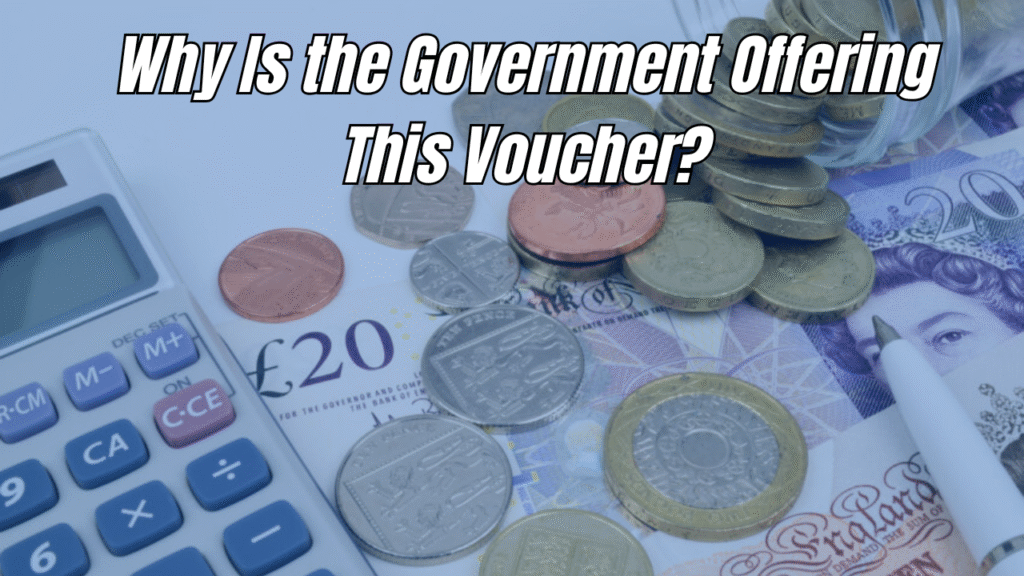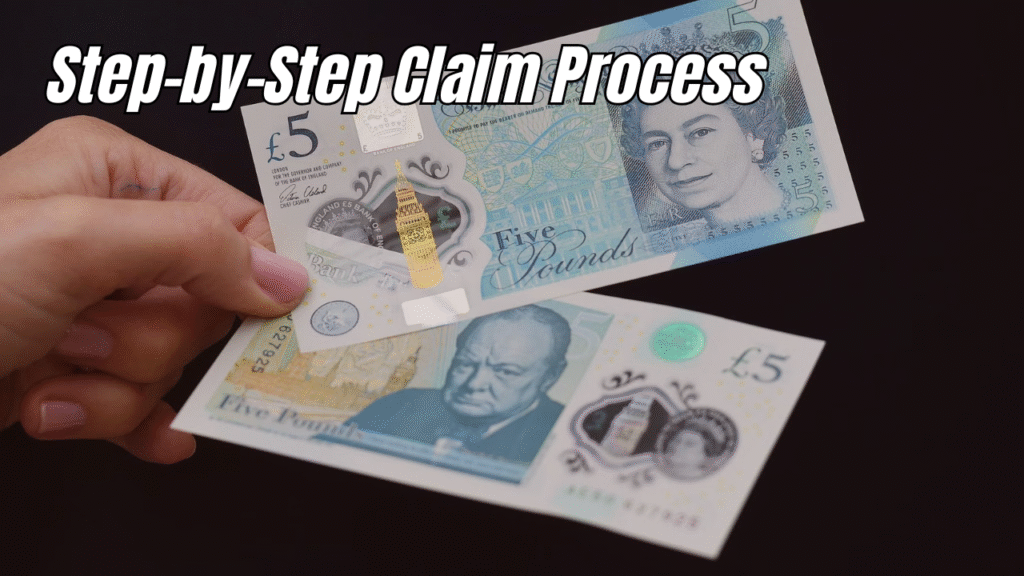1. Introduction
With the rising cost of living and continued pressure on low-income families, government support in the form of direct assistance vouchers has become increasingly essential. One such measure is the £150 voucher, designed to help eligible UK households with essential living costs. This article explains who can get it, how to claim it, and how to use it effectively.
2. What Is the £150 Voucher Scheme?
The £150 voucher is a one-time payment, usually issued by local authorities or schools, to help families afford food, school clothing, utilities, or other critical household expenses.
Often funded through schemes such as:
- Household Support Fund
- School Holiday Meal Assistance
- Council Welfare Assistance
These vouchers are not loans — they don’t need to be repaid.

3. Why Is the Government Offering This Voucher?
This initiative is part of a broader attempt to tackle poverty and support struggling families. Reasons for its implementation include:
- Energy crisis driving up utility bills
- Inflation on essential groceries
- School holiday hunger among children
- Growing public demand for direct relief instead of complex benefits
4. Who Is Eligible for the £150 Voucher?
Eligibility generally depends on one or more of the following:
- Receipt of means-tested benefits (e.g., Universal Credit, Income Support)
- Household income below a specific threshold
- Having children who receive free school meals (FSM)
- Pensioners or disabled people living on low income
- Single-parent households with dependents
Some councils also extend eligibility to:
- Recently unemployed individuals
- Low-income caregivers or carers
5. Means-Tested Benefits and Eligibility Criteria
If you’re claiming one or more of these, you are likely eligible:
| Benefit Type | Eligible for Voucher? |
|---|---|
| Universal Credit | Yes |
| Income-based Jobseeker’s Allowance (JSA) | Yes |
| Pension Credit | Yes |
| Working Tax Credit | Often |
| Child Tax Credit | Often |
| Income-related Employment and Support Allowance (ESA) | Yes |
| Housing Benefit | Yes |
6. How to Apply or Automatically Qualify
Two possible routes:
- Automatic Issuance
- If you’re already enrolled in free school meals or receive specific benefits, the council may automatically send your voucher by post or email.
- Manual Application
- Visit your local council’s website
- Complete a short form
- Submit supporting documents (e.g., benefit statement, proof of address)
7. Eligible Vouchers: What They Can Be Used For
The £150 voucher can typically be redeemed for:
- Supermarkets (Tesco, Asda, Morrisons, Aldi, Sainsbury’s)
- School uniforms or children’s clothing
- Energy bills via prepaid top-ups
- Household essentials (toiletries, baby formula, cleaning products)
Note: Vouchers usually cannot be used for alcohol, cigarettes, or electronics.

8. Step-by-Step Claim Process
- Check eligibility criteria on your council’s website
- Create or access your benefits account
- Fill out the application form
- Upload supporting documents
- Receive confirmation within 7–10 working days
- Receive voucher code via text, email, or letter
- Use at participating retailers
9. Key Deadlines You Shouldn’t Miss
| Region | Deadline to Claim (Approx.) |
|---|---|
| England | June 30, 2025 |
| Scotland | July 10, 2025 |
| Wales | June 28, 2025 |
| Northern Ireland | July 5, 2025 |
Note: Some councils operate on a rolling basis and have flexibility for late applicants.
10. Regional Variations
England
Councils administer through the Household Support Fund
Vouchers may be split over summer holidays
Scotland
Focus on winter clothing, energy bills
Often handled through schools and housing offices
Wales
Strong focus on food vouchers for children
Northern Ireland
Involves more community groups and charities in distribution
11. Income Thresholds and Household Composition
| Household Type | Approx. Max Income Threshold |
|---|---|
| Single adult, no children | £18,000/year |
| Couple with 2 kids | £32,000/year |
| Single parent, 1 child | £23,000/year |
| Pensioner (single) | £17,000/year |
These may vary by council and additional factors like rent costs or disability allowances.
12. How Schools and Councils Help Distribute the Voucher
- Schools often distribute vouchers to parents of FSM-eligible children
- Councils send vouchers directly or through community organizations
- Charities like Citizens Advice and Turn2Us can also assist
13. What If You Don’t Receive the Voucher Automatically?
If you meet the eligibility but don’t receive the voucher:
- Contact your local council welfare team
- Check your benefit status
- Ensure your email and address details are current
- Submit a late application request before the closing date
14. Families Most Likely to Benefit
- Single-parent families
- Parents working part-time or in gig jobs
- New claimants of Universal Credit
- Parents of children under 5
- Families receiving school uniform grants
15. Common Errors and How to Avoid Them
❌ Using the wrong council website
✅ Always apply through your local authority
❌ Not submitting updated bank/benefit information
✅ Ensure you submit your most recent award letter
❌ Letting the voucher code expire
✅ Use it within the stated timeframe (typically 30 days)
16. What the Voucher Covers
| Category | Covered? |
|---|---|
| Groceries | ✅ |
| Prepaid Energy | ✅ |
| School Uniforms | ✅ |
| Alcohol/Tobacco | ❌ |
| Online shopping (Amazon, eBay) | ❌ |
17. Not Just Parents – Who Else Can Claim?
- Grandparents raising grandchildren
- Foster parents
- Kinship carers
- Pensioners with dependents
- Disabled adults living independently
18. Case Study: A Family of Four
The Smith family, living in Manchester:
- Parents both working part-time, earning a combined £28,000
- Two children, ages 5 and 8, both receiving free school meals
- Automatically received £150 voucher via school
- Used for school shoes, groceries, and prepaid electric meter
Result? Significant relief ahead of summer holidays.
19. How the £150 Voucher Helps During Cost-of-Living Crisis
With prices up 11–13% across essentials in 2025, the £150 voucher:
- Offsets 2–3 weeks of grocery bills
- Covers one month’s energy top-up
- Reduces school prep costs
While not a long-term solution, it serves as a crucial lifeline during critical periods.
20. Conclusion
The £150 voucher scheme provides a timely and much-needed financial cushion for struggling families across the UK. Whether used for food, school uniforms, or heating bills, it helps bridge the affordability gap for those most affected by economic uncertainty.
Make sure to:
- Check eligibility
- Apply or confirm automatic receipt
- Use the voucher promptly
- Reach out for additional support if needed
Small interventions like these can bring major relief in hard times.
21. FAQs
1. Can I apply for the voucher if I just started claiming Universal Credit?
Yes. As long as you’re receiving the benefit during the voucher period, you should qualify.
2. Can both parents in a household apply separately?
No, vouchers are typically issued per household, not per individual.
3. What if I accidentally delete the voucher code email?
Contact your local council or issuing school to request a reissue.
4. Are the vouchers taxable?
No. These vouchers are non-taxable, one-time assistance grants.
5. Can I use the voucher online?
In some cases, yes — if the retailer offers online redemption (e.g., Tesco e-vouchers).

